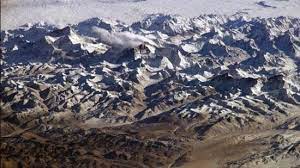Aerosol Increase In Hindu Kush-Himalaya-Tibetan Plateau Region:

A new analysis by the Indian Space Research Organisation’s (ISRO) Physical Research Laboratory has shown that the Hindu Kush-Himalaya-Tibetan Plateau region has been witnessing an alarming increase in aerosol levels.
- Aerosols are tiny solid or liquid particles suspended in air or as a gas.
- Aerosols can be natural, such as fog or gas from volcanic eruptions, or artificial, such as smoke from burning fossil fuels.
- Aerosol particles are either emitted directly to the atmosphere (primary aerosols) or produced in the atmosphere from precursor gases (secondary aerosols).
- Aerosol particles are tiny, but numerous, and often comprise of a number of inorganic and organic substances.
- True aerosol particles range in diameter from a few millimicrometres to about 1 micrometre (equal to 10-4 cm).
- Particles with a diameter of less than 0.1 micrometre are sometimes referred to as Aitken nuclei.
- Visible forms of atmospheric aerosol plumes include smoke, smog, haze and dust.
- Aerosol particles, such as dust, play an important role in the precipitation process, providing the nuclei upon which condensation and freezing take place.
- They affect climate by reflecting or absorbing incoming solar radiation and enhancing the brightness, and thus reflectivity, of clouds.




